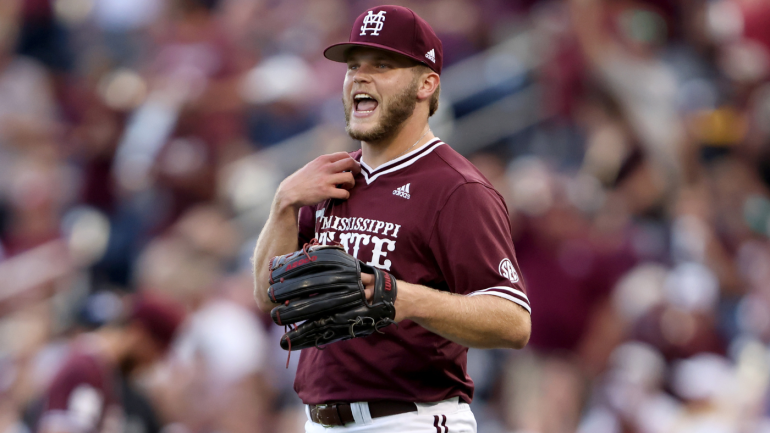
Major League Baseball's 2022 amateur draft will begin on Sunday, with the Baltimore Orioles kicking things off by making the No. 1 pick for the third time in franchise history. CBS Sports has spent the past month previewing what's to come, including ranking the class's top 30 players and mocking the first round.
This week, we're continuing the trend by highlighting and examining two factors that have and will continue to shape draft boards: the impact of the injuries suffered by myriad top pitching prospects, as well as and the NCAA's Name, Image, and Likeness policy.
Let's get to it.
Pitching injuries
One of the constants throughout this draft cycle has been the prevalence of injuries to top pitching prospects. Dylan Lesko, Landon Sims, Connor Prielipp, Peyton Pallette, and Reggie Crawford -- all ranked in the top 50 during the preseason -- each either required an operation or they spent the year recovering from one.
The rash of injuries has, predictably, led to preference-list shuffling across the league. One high-ranking veteran scouting official noted to CBS Sports that the exact time and order those pitchers come off the board now will be dictated in part by their price point, or which individuals are most willing to take a discount in response to their injuries. How teams feel about their respective recoveries will play a role, too.
It's impossible to say for sure why there have been so many injuries in this class. The evaluators who spoke to CBS Sports pinned most of the extremity on the COVID-19 pandemic. Collegiate and high school seasons were mostly washed away in 2020, forcing pitchers to prioritize bullpen and side sessions, and resulting in them shouldering a significant year-to-year increase in so-called "live" (read: in-game) innings over the course of the 2021 and 2022 seasons.
"No one denies that pitching development has taken massive steps forward in the last five years," a scout said. "The problem is when you're only able to do that and no one can throw live, the risk goes up."

Fantasy Baseball Today Newsletter
Your Cheat Code To Fantasy Baseball
You're destined to gain an edge over your friends with advice from the award-winning FBT crew.
Thanks for signing up!
Keep an eye on your inbox.
Sorry!
There was an error processing your subscription.
NIL
The medical side of things is only one of the hidden factors that dictate who is selected by whom. Another is the concept of signability, or, essentially, a player's likelihood to turn professional based on their financial demands and collegiate commitments. That's certain to be impacted by the relatively new introduction of the NCAA's Name, Image, and Likeness (NIL) policy, which allows non-professional players to profit off their talents.
While college football and college basketball players seem more likely to benefit from cash windfalls, scouts do think that it could make a difference for some baseball players -- especially those who play for or are committed to an SEC school.
"I think that's a real thing, I think you can link that with the amount of people utilizing the transfer portal to get additional NIL funding," one veteran scout said. "That's not just exclusive to kids in college, the kids going to college will be making the same asks."
That additional leverage should help players secure better signing bonuses. To wit, Arizona Diamondbacks prospect Jordan Lawlar, the No. 6 pick in last year's draft, was rumored to be close to going to Vanderbilt in part because of his potential NIL earnings. He was able to use that threat to land a $6.7 million signing bonus, the third-highest in the draft behind Jack Leiter and Jackson Jobe.
Despite potentially having to pony up more often on top talents, the aforementioned scout believes big-league teams are fine with the NIL concept -- in no small part because minor-league contraction has left teams with fewer roster spots; that, in turn, puts more emphasis on college ball serving a developmental purpose.
"That's OK," the scout said about some high school players choosing to head to campus. "Without two levels in the minor leagues, that's OK."






















